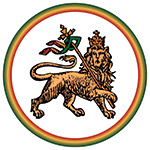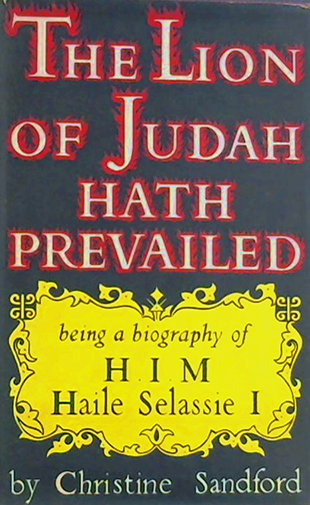THE LION OF JUDAH HATH PREVAILED
13
The Next Ten Years
1. The Economic Background
As recorded in the preceding chapter, the business of ‘putting the house in order’ was by the end of 1944 sufficiently completed for the Emperor and his ministers to begin to take longer views regarding the development of the empire and its peoples. The programme they began to envisage, though never announced in the modern manner as a five-year or ten-year plan, covered almost every form of governmental activity. It had as its main features the creation of modern security forces, well appointed and well disciplined army and police forces; the improvement of roads and communications of all sorts; and the expansion of educational and health services.
Obviously none of this could be achieved unless financial resources could be found without upsetting the economic balance of the country. The success in realizing this aim is perhaps the most striking achievement to date of Haile Selassie’s administration.
No doubt Ethiopia has during these ten years been greatly blessed in that she—alone among the countries surrounding her—has enjoyed peace and tranquillity. Little doubt also that she has been very fortunate in that the soaring world price of coffee—her largest export—has generously greased the wheels of the state coach. But, all this would not have availed unless the economic structure had been well designed and well built.
It is not within the scope of this book to attempt a technical appreciation of the economic policies of the Ethiopian Government of which the Emperor is the head, its aim is to record the aims and achievements of the Emperor. But as the programme we are discussing was in its general aspects the dream of Haile Selassie since early days, and as its fulfilment, as we have said above, depended and will continue to depend on its financial background, we cannot avoid touching briefly on these matters.
The first budget to be passed by the Ethiopian Government was published in the Appropriation Proclamation of 1944. It estimated the revenue for the year 1943 as Eth.$ 38,200,000, or roughly £3,440,000.
Ethiopia being an agricultural country with few industries, there could not be much flexibility in the revenue, and it certainly could not find the surplus required for an ambitious programme of development. What could be the solution? A good deal could be done by fiscal reform—by providing efficient central control of all taxation—and by introducing new taxes that would not bear on land and agriculture. The most significant of these were the steady and drastic scaling up of customs duties on imports, and the introduction of a personal and business tax in 1943. Much also could be done by improving the financial mechanism of trade.
Currency and exchange were subjected to controls as soon as possible, and these have amply justified themselves. The situation as regards currency when the Emperor first returned was fantastic. A traveller proceeding from the north to the south in the lowlands near Dessie stopped to purchase a few oranges, profferred a pound note to the young Adal Somali who was offering them and demanded change. Without turning a hair the youth produced from the pocket of his sole garment, a khaki shirt, a bulging wallet containing Egyptian piastres, East African shillings, rupees from Aden, francs, and lire, and suggested that the traveller should help himself. Neither party to the transaction had any very clear ideas as to who had gained by it.
In the old days the sole legal tender had been the Maria Theresa silver dollar. These coins were stamped with the head of the Austrian Empress of the eighteenth century; though they were not introduced into Ethiopia till 1850 they had been circulated in Iraq and Arabia for a century. By the beginning of the twentieth century, so deeply rooted was the detail of the design in the minds of the Ethiopian country folk that they would examine and reject any coin that differed in the smallest respect—even the number of pearls on the Empress’s veil, or the size and twist of the lion’s tail. When Menelek issued dollars impressed with his own effigy they refused to take them into general use; so it is still the old dollar with the head of the Austrian queen of two hundred years ago that is the only widely known metal currency.
The new Ethiopian currency—notes of $1, 5, 10, 50, and 100—is the sole legal tender. It is based on the United States dollar, and is a very sound proposition; its legal backing is laid down as 30 per cent but at the moment of writing stands at 40 per cent. Exchange controls, though at times very troublesome, resulted in a steady increase of foreign reserves, in particular holdings of United States dollars.
The old Bank of Abyssinia, much respected in pre-war days—when you never went to the counter to cash your cheque, but sat, having a chat with the manager in his sanctum, while a messenger brought your money, with a low bow—was put into liquidation by the Italians and never resuscitated. During the first days of the Emperor’s return, Barclay’s Bank stepped nobly into the breach and served all the needs of a community of diverse interests. Now we have the State Bank of Ethiopia—a very flourishing concern—about which the facts speak for themselves.
Since its foundation in August 1942 its assets have grown from Eth.$ 12,000,000 to Eth.$ 317,000,000 at the end of 1953. In 1953 its gross earnings amounted to Eth.$ 5,800,000, and at the end of that year its monetary reserves amounted to Eth.$ 181,800,000 and total deposits of Eth.$ 103,800,000. An indication of the growing prosperity of the people and of the interesting use of the bank as a medium of savings is the steady rise from year to year of the savings and time deposit accounts, which amounted to Eth.$ 8,200,000. As a further index to economic well-being it may be noted that Ethiopia has a favourable balance of trade. In 1953 the surplus reached a record of Eth.$ 44,100,000, of which 86 per cent was earned in gold or United States dollars.
Another step was to secure loans from external resources, and these have been accorded in generous measure. The Export and Import Bank of Washington supplied Eth.$ 6,805,602, of which a considerable amount has been repaid. The International Bank for Reconstruction and Development has given three loans aggregating Eth.$ 21,250,000, for highway construction and maintenance, financing the Development Bank of Ethiopia, and the development of telecommunication; of which Eth.$ 16,148,862 has been withdrawn and is still outstanding. There is also a United States Lend Lease (silver) loan of Eth.$ 9,629,375 still outstanding. Various other smaller loans have all been repaid in full.
Not only has help from abroad been in the form of loans. The World Health Organization and the Food and Agricultural Organization of the United Nations have provided technical staff and equipment which have been of considerable assistance; and a general Point Four Agreement, signed in 1951 with the Government of the U.S.A., has made possible the realization of plans for agricultural and educational development of the highest importance to this country. These plans include the establishment of an agricultural college and schools; the investigation of the water resources of the country; programmes of technical and scientific research and education; handicraft training; a public health project; the establishment of research stations; the initiation of agricultural extension work and assistance to the F.A.O. work already started, in vaccinating cattle.
Now to see what all these things have meant in strengthening the Government’s power to realize its programme, let us compare their budgets at the beginning and end of the ten years under review. For the year ending September 1944; the estimated revenue was Eth.$ 38,072,000 and the estimated expenditure Eth.$ 37,942,000. For the year ending September 1954 (the latest for which figures are available) the estimated revenue was Eth.$ 121,340,000 and the estimated expenditure Eth.$ 121,295,606. You find, as you would expect, that the expansion in revenue of Eth.$ 83,000,000 is mainly due to the following: loans Eth.$ 13,250,000; increase in customs Eth.$ 40,250,000; and income tax Eth.$ 13,500,000.
When you come to expenditure you find that the expansion of Eth.$ 87,000,000 can be attributed to an increase of over Eth.$ 26,000,000 in expenditure upon the armed forces (including the Imperial Air Force); an increase of at least Eth.$ 9,000,000 on construction and maintenance of roads and bridges; an increase of Eth.$ 11,500,000 on education; of Eth.$ 3,000,000 on health services; of Eth.$ 6,500,000 for federal expenses in Eritrea; of over Eth.$ 1,000,000 in contributions to Point Four activities; and finally extraordinary expenditure amounting to Eth.$ 21,000,000, which included such items as subscriptions to the capital of the Imperial Communications Board and the Development Bank of Ethiopia, and expenditure on railways, ports and lights, and public buildings in Eritrea, and repayment of loans.
All this goes to show that there is money available for the realization of the Emperor’s long-term programme of development, that the Government is meeting its obligations, and that there is growing prosperity amongst the people. As the State Bank’s Ethiopian Survey of November 1954 says: ‘Ethiopia’s economy is extremely sound.’
Electronic edition created and published online by members of the
Emperor Haile Sellassie First Theocracy Reign
Order of the Nyahbinghi

October 15, 2019
